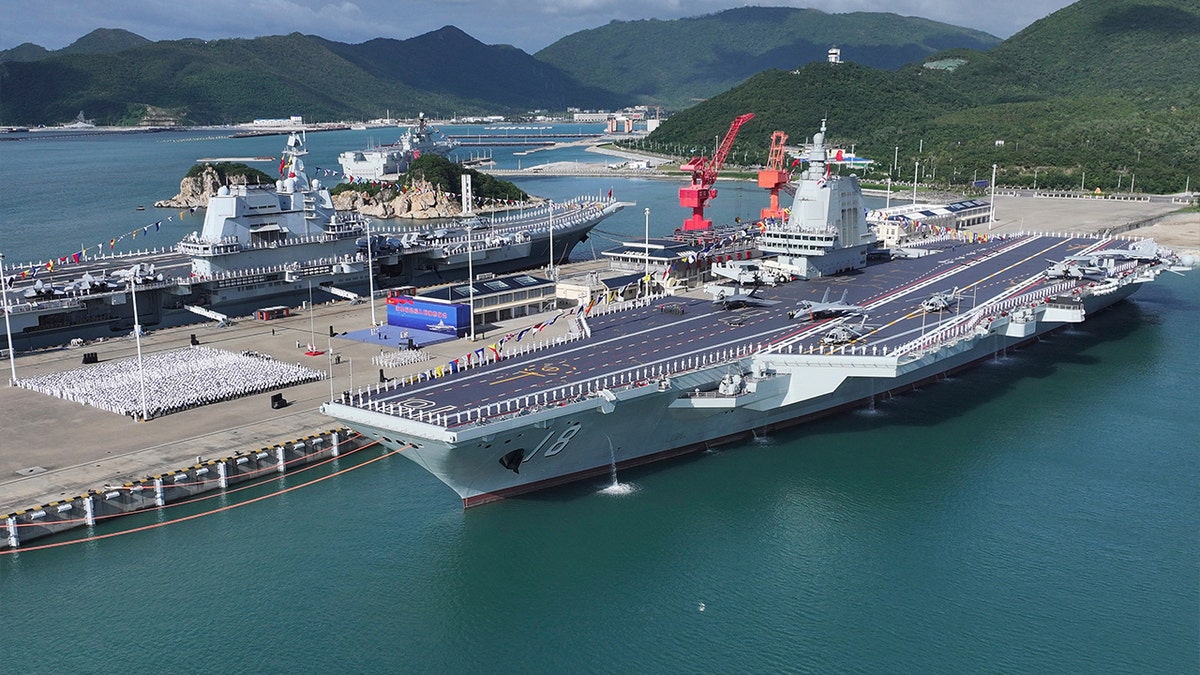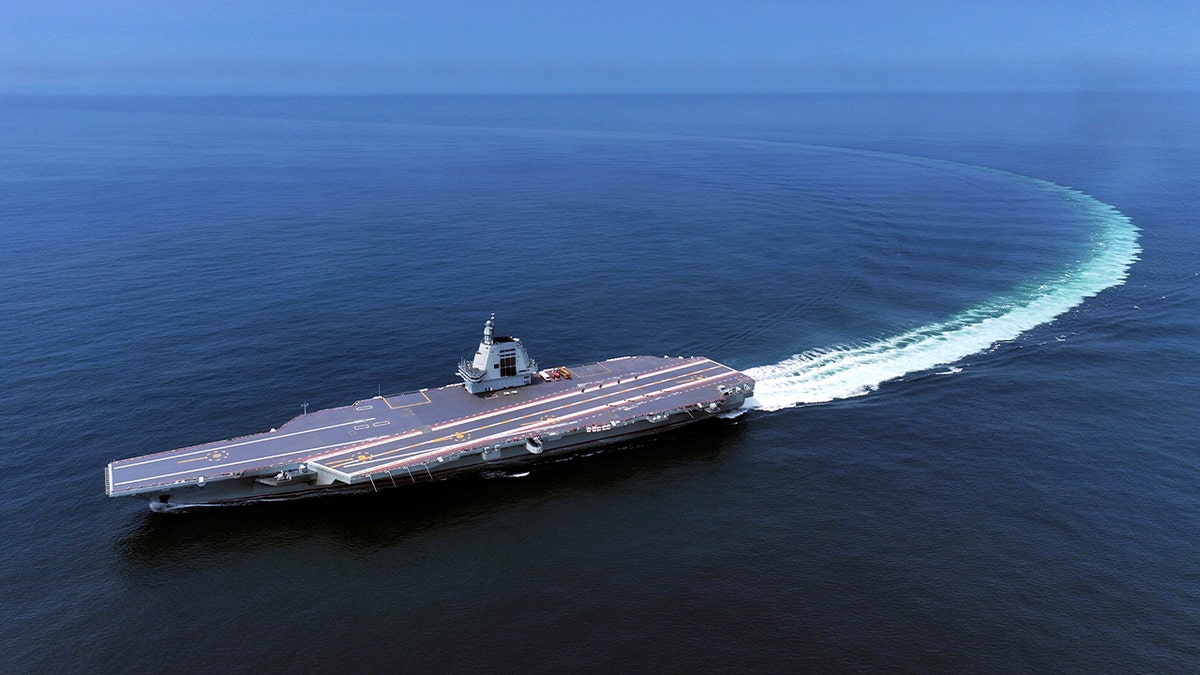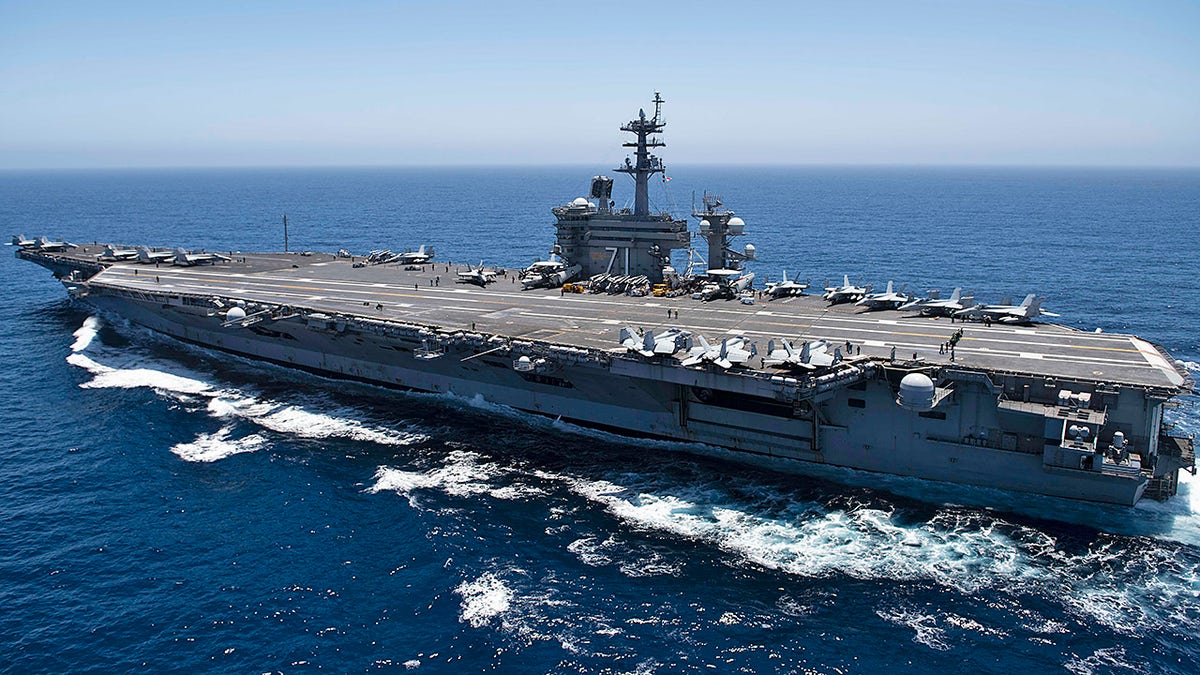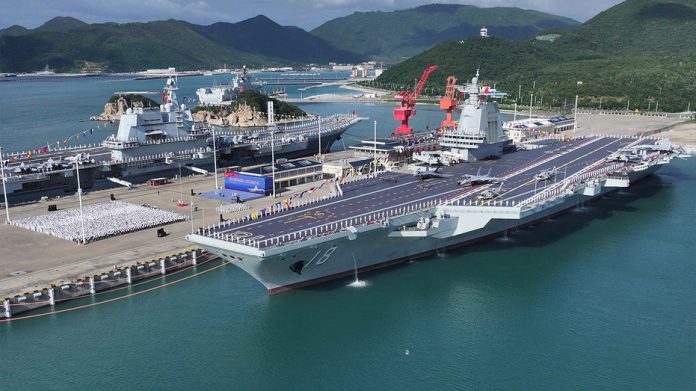NEWYou can now listen to Fox News articles!
China formally brought its next-generation aircraft carrier, the Fujian, into active service Wednesday — a milestone in its drive to transform the People’s Liberation Army Navy into a force capable of projecting power far beyond Asia’s shores.
The Fujian is China’s third aircraft carrier, compared with the U.S.’s 11, and the first that it designed and produced at home. It’s one of the most significant milestones in President Xi Jinping’s push to modernize the People’s Liberation Army by 2035, part of a sweeping military overhaul aimed at countering U.S. influence in the Indo-Pacific.
China’s state media said the Fujian will continue sea trials and flight tests before becoming fully combat-ready, but its commissioning signals Beijing’s growing confidence in operating larger, more complex warships. The 80,000-ton vessel is equipped with electromagnetic catapults that can launch heavier aircraft, including advanced J-35 stealth fighters, giving it longer range and greater strike capacity than China’s two previous carriers, the Liaoning and the Shandong.
Defense analysts say the Fujian marks a shift toward a true blue-water navy — one designed to operate far from Chinese shores — bolstering Beijing’s ability to project power across the Indo-Pacific and potentially into the western Pacific, where U.S. carriers have long dominated. Still, China remains years away from matching the U.S. Navy’s global reach or experience in carrier operations. The Fujian is conventionally powered, limiting its endurance compared with America’s nuclear fleet.
TRUMP’S AIRCRAFT CARRIER VISIT SENDS CHINA A MESSAGE: US SEA POWER STILL RULES THE WAVES

A commissioning and flag-presenting ceremony of the Fujian, China’s third aircraft carrier and the first that it has both designed and built itself, equipped with electromagnetic catapults, seen on right at a naval port in Sanya city in southern China’s Hainan Province. (Li Gang/Xinhua via AP)
The Fujian’s launch also reignited debate over the use of electromagnetic catapults — a technology Beijing has embraced and one that President Donald Trump has publicly criticized as unreliable.
Speaking aboard the aircraft carrier USS George Washington while visiting sailors in Japan, Trump announced his intention to sign an executive order directing the United States Navy to revert to steam-powered catapults and hydraulic elevators on new carriers, rejecting the modern electromagnetic system (EMALS) as too costly, unreliable and difficult to repair.
“They’re spending billions to build stupid electric. And the problem is, when it breaks, you have to send it up to MIT…. The steam — you can fix it with a hammer and a blowtorch. And it works just as well, if not better,” Trump said.
TRUMP SAYS MISSILES FOR JAPAN’S F-35S WILL ARRIVE ‘THIS WEEK’ DURING VISIT TO USS GEORGE WASHINGTON

China’s third conventionally powered aircraft carrier, the Fujian, conducted a maiden sea trial on May 7, 2024. (Ding Ziyu/Xinhua via AP)
He told the assembled sailors: “When we build aircraft carriers, it’s steam for the catapults, and it’s hydraulic for the elevators. We’ll never have a problem.”
News of the Fujian’s commissioning prompted immediate concern in Japan, which has been expanding its own defense capabilities in response to China’s growing military power. Minoru Kihara, a former defense minister who now serves as chief cabinet secretary under Prime Minister Sanae Takaichi, said the launch showed that Beijing is “extensively and rapidly strengthening its military power without transparency.”

The U.S. has 11 aircraft carriers in operation, like the USS Theodore Roosevelt pictured above. ( U.S. Navy via Getty Images)
Kihara told reporters that Japan believes China is working to extend its naval and air operations farther from its shores and warned that Tokyo will “calmly but decisively respond” to any potential threats.
The United States maintains a carrier strike group presence in the western Pacific and conducts regular freedom-of-navigation operations near disputed islands to counter China’s territorial assertions.
A senior War Department official told Fox News Digital this week: “China’s military buildup sends a signal to all that Beijing intends to use military force to alter the balance of power in the Indo-Pacific.”
CLICK HERE TO DOWNLOAD THE FOX NEWS APP
Still, Secretary of War Pete Hegseth and his Chinese counterpart appeared to smooth over some tensions in a meeting last week, agreeing to establish military-to-military communications channels to “deconflict.”
“We have more meetings on that coming soon. God bless both China and the USA!” Hegseth wrote in a post on X after the meeting.


